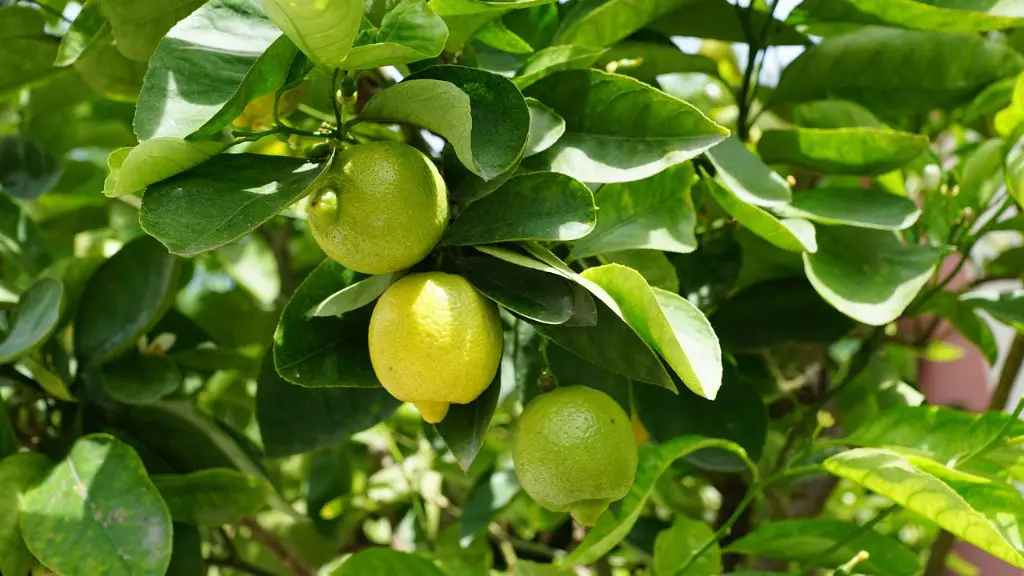Preparation
Palm tree stripping may seem like an intimidating process. But, with the right tools, it can be managed relatively easily. Before starting the stripping process, it is important to consider the safety of the tree and its potential consequences. Firstly, make sure to take all necessary precautions such as wearing protective goggles and gloves. Secondly, ensure the palm tree is strong and well planted in the ground, otherwise the process could result in a complete collapse.
The tools used in the palm tree stripping process will depend on the height and width of the palm tree, as well as its maturity. When selecting the appropriate tool, it is useful to look for one with larger teeth or blades which will make the job easier. Additionally, a good quality garden ladder will be required, in order to reach the tree from the optimal angle. And finally, sharp pruning shears should also be on hand to help with any delicate trimming.
Stripping the Palm Tree
Once all the necessary tools have been prepared, it is time to start the stripping process. Carefully evaluate the tree, looking for any dead, damaged or diseased fronds which should be removed. When ready, begin cutting the fronds from the bottom of the tree, making sure to keep the saw blade level while doing so. Next, carefully climb the tree and begin stripping the top of the palm, its crown. Be careful here, since overcutting can weaken the tree. Focus on the area close to the trunk and cut only fully open fronds, thus avoiding cutting off any new growth.
When all fronds have been removed, it is time to trim and shape the remaining foliage. This is important for overall aesthetics, as well as for helping the tree to recover. Look for fronds with multiple offshoots and trim from the bottom to the top. But, refrain from making drastic changes – removing too much material can put excessive strain on the tree. Double check for any more dead or diseased fronds and snip them off if need be.
Monitor the Process
The palm tree, once stripped, might appear sparse or even aesthetically displeasing. But cheer up – it is only temporary. After the stripping process, it’s important to monitor the tree and observe its recovering process. Newly sprouting fronds should be proportionally spaced along the stem and should not be over-trimmed. Keep an eye out for any signs of distress, such as wilting, discoloration or yellowing of fronds. In the case of any concerning changes, contact a qualified professional.
Once the tree has sufficiently recovered, it is then possible to prune any other parts of the tree. This includes any dead wood and excessive pups, which can be sprayed with a solution of water mixed with insecticide. Finally, a nutritional fertilizer solution can be applied to the soil in order to ensure the tree gets all the necessary nutrients.
Maintenance
Maintaining a healthy palm tree is largely reliant on regular stripping. When done correctly, stripping can encourage new growth and keep the plant strong, which will benefit it throughout the years. Stripping should be undertaken at least once a year and the area around the tree should be kept neat and tidy, to help the tree’s overall health. Additionally, regular watering and mulching are important steps to help keep the tree in good condition. Lastly, in areas with a dry season, it is beneficial to provide shade and shelter for the palm tree, to help withstand periods of drought.
Disease Control
Palm trees are prone to various diseases, causing leaf discoloration, dieback and rotting. Unfortunately, there is no one-size-fits-all solution when it comes to preventing the spread of disease. Hence, the best way of protecting the tree is by regularly cleaning up the dead leaves and fronds, which act as a breeding ground for pests. Additionally, a good-quality fungicide should be applied to the soil and stem, to help stop the spread of any diseases.
Precautions for Pruning
When pruning, it is important to keep in mind that too much cutting can be hazardous to the tree’s health. Hence, never remove more than ⅓ of the branches at once and take care to avoid pruning into the thick mass of leaves. Also, refrain from pruning too close to the trunk, as this can cause significant long-term damage. Excessive pruning can also weaken the tree, as it can take many years for the palm tree to heal. Ultimately, it is best to contact an experienced professional if there are any concerns.
Insect Control
Palm trees are commonly attacked by a range of insects, including mites, aphids and scale. As with disease prevention, there is no single answer to insect management. Hence, it is important to check the tree regularly, looking for signs of infestation. Any affected fronds should be immediately pruned off and professional pest control should be considered, if there is a significant outbreak. Additionally, periodic applications of insecticide can help protect the tree from future outbreaks.
Fertilizer Use
Fertilizers are essential for providing a palm tree with the essential nutrients it needs to remain healthy. When selecting a fertilizer, it is important to choose one with a good balance of nitrogen, phosphorus and potassium. Additionally, trace elements such as magnesium, calcium and iron should also be taken into account. All these elements are usually found in most palm tree-specific fertilizers and it is best to avoid purchasing those with a high nitrogen content.
Time Management
Timing is key when it comes to palm tree care. Stripping should be undertaken in early spring, when the new fronds are pushing out. Fertilizers should also be applied during this time, as well as any insect-repelling agents. Summer is the best time for protecting against pests and diseases, as this is when most outbreaks tend to take place. Autumn should be dedicated to regular pruning and clean-up of the area around the tree, while winter is best reserved for monitoring the overall condition of the tree.

